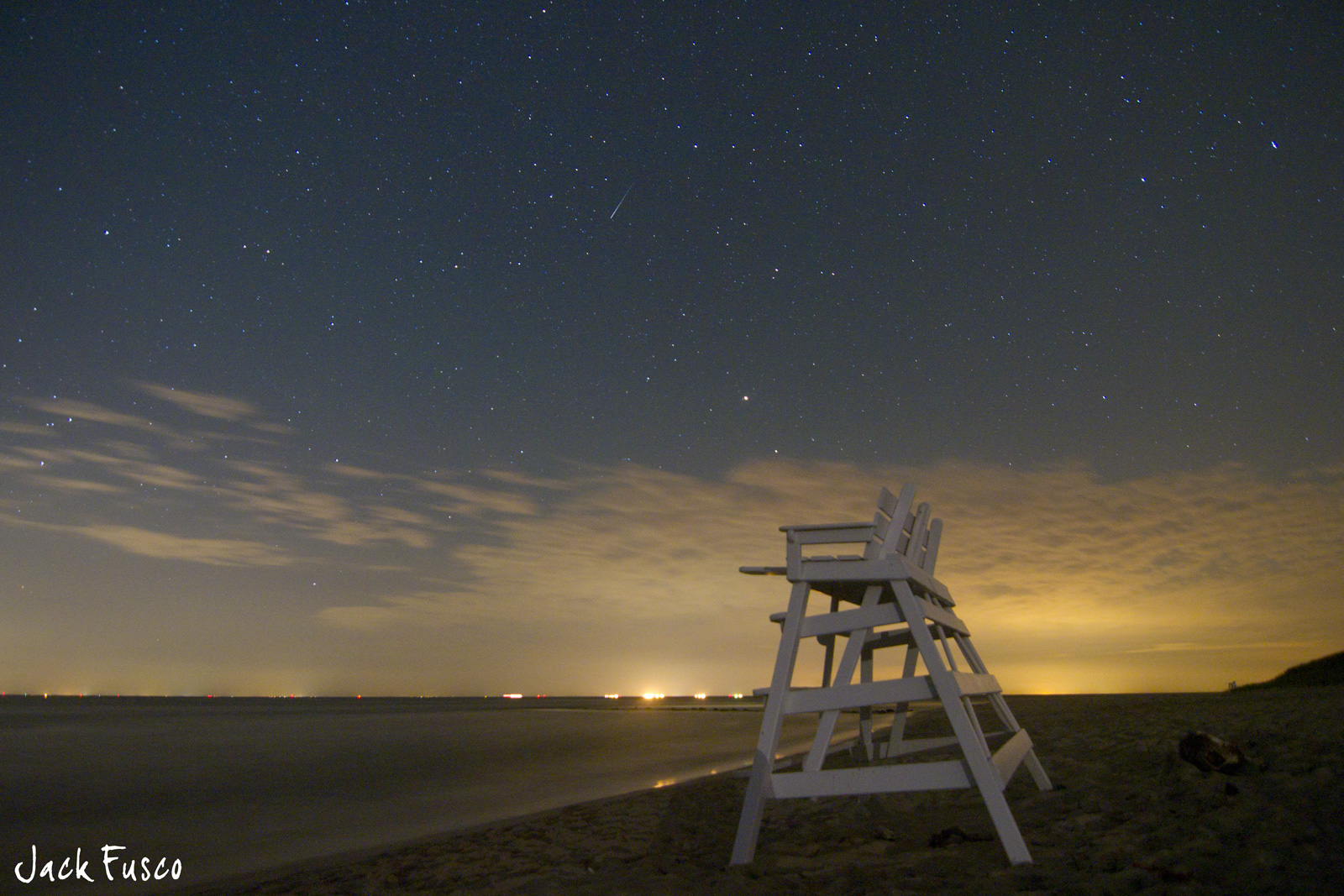Meteor Lights Up Jersey Shore Night Sky

A fleeting meteor streaks across the night sky over a New Jersey beach in serene view captured by a local photographer.
Night sky photographer Jack Fusco captured the meteor as it flared up over a beach in Cape May, N.J., in the wee hours of June 28, just after the peak of the annual Bootid meteor shower.
"The shower peaked about an hour after the moon had set, at about 2 a.m. EDT," Fusco told SPACE.com in an email. "Overall, it was a beautiful night for stargazing."
June's Bootid meteor shower is created by the remains of the Comet 7P/Pons Winnecke, according to the International Meteor Organisation.
The Bootid shower is classified as a variable meteor shower by the American Meteor Society because its annual displays are often dim, but can sometimes be impressive to lucky stargazers. Variable meteor showers typically only "produce strong activity on rare occasions," the society explains in an overview. "Most of the time, only a few scattered remnants of these showers are observered with rates of one shower member per night."
The Bootid meteor shower is one of several meteor showers to light up the night skies in the next few months.

The annual Delta Aquarid meteor shower is expected to hit its peak on July 29, but will likely be washed out by the nearly full moon, according to a NASA alert.
Get the Space.com Newsletter
Breaking space news, the latest updates on rocket launches, skywatching events and more!
Next up is the annual Perseid meteor shower, which will peak on Aug. 12 and is typically one of the year's dependable shooting star displays. At its peak, the 2012 Perseid meteor shower could produce up to 100 meteors per hour for stargazers observing the night sky from a dark location, well away from city lights, between 10 p.m. and 11 p.m. local time, NASA officials said.
Editor's note: If you have an amazing meteor photo or other night sky image you'd like to share for a possible story or image gallery, please contact managing editor Tariq Malik at tmalik@space.com.
Join our Space Forums to keep talking space on the latest missions, night sky and more! And if you have a news tip, correction or comment, let us know at: community@space.com.

Tariq is the Editor-in-Chief of Space.com and joined the team in 2001, first as an intern and staff writer, and later as an editor. He covers human spaceflight, exploration and space science, as well as skywatching and entertainment. He became Space.com's Managing Editor in 2009 and Editor-in-Chief in 2019. Before joining Space.com, Tariq was a staff reporter for The Los Angeles Times covering education and city beats in La Habra, Fullerton and Huntington Beach. In October 2022, Tariq received the Harry Kolcum Award for excellence in space reporting from the National Space Club Florida Committee. He is also an Eagle Scout (yes, he has the Space Exploration merit badge) and went to Space Camp four times as a kid and a fifth time as an adult. He has journalism degrees from the University of Southern California and New York University. You can find Tariq at Space.com and as the co-host to the This Week In Space podcast with space historian Rod Pyle on the TWiT network. To see his latest project, you can follow Tariq on Twitter @tariqjmalik.









